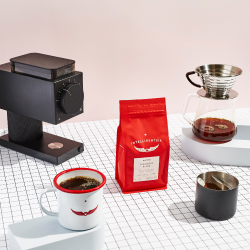Step into the spellbinding realm of Italian roast coffee, where the supremacy of dark roasts is undisputed, and the flavors are deeply imbued with boldness. For years, the Italian roasters have been honing the craft of producing coffee that is sumptuously rich and robust, which has become synonymous with the country’s café culture. However, what are the features that set this particular roast apart from other dark roasts? What endears it to coffee connoisseurs worldwide, making it an object of their fervent affection?
In this all-encompassing guide, we shall unfurl the mystery that shrouds Italian roast coffee. We shall delve into the unique attributes that distinguish it, scrutinize the intricacies of the roasting process that endows it with its distinctive flavor, and explore the optimum ways to partake in this luxurious coffee experience. From the conventional espresso blends to the innovative adaptations of this archetypal roast, we shall traverse every facet of this delectable coffee, equipping you with the knowledge and inspiration required to relish and savor its multifaceted and intricate flavors. Therefore, relax and settle into your favorite coffee mug as we embark on a flavorsome odyssey into the affluent and robust universe of this distinctive roast.
Italian Roast Coffee: Key Takeaway
- Italian roast coffee is characterized by its bold, smoky, and caramelized flavors, with slightly lower acidity compared to other dark roasts, making it a unique and appealing choice for coffee lovers.
- The roasting process for this coffee plays a significant role in developing its distinct flavor profile, as the beans undergo an extended roasting time that releases deep, rich flavors.
- This coffee roast is versatile and can be enjoyed using various brewing methods, including espresso, French press, and drip coffee makers, allowing you to explore different taste experiences.
- Blending different coffee beans allows you to create your unique roast blends, offering an opportunity to experiment with various bean origins and roast levels to achieve your desired flavor combination.
- Supporting ethically sourced and sustainable coffee producers is essential for promoting responsible coffee industry practices, ensuring a better future for coffee production and the environment.
The Origins and Characteristics of Italian Roast Coffee
This roast represents a proud tradition that has been honed over centuries. To truly appreciate the depth and complexity of this dark roast, let’s take a closer look at its origins, defining features, and some of the popular blends and varieties that make it a favorite among coffee enthusiasts.
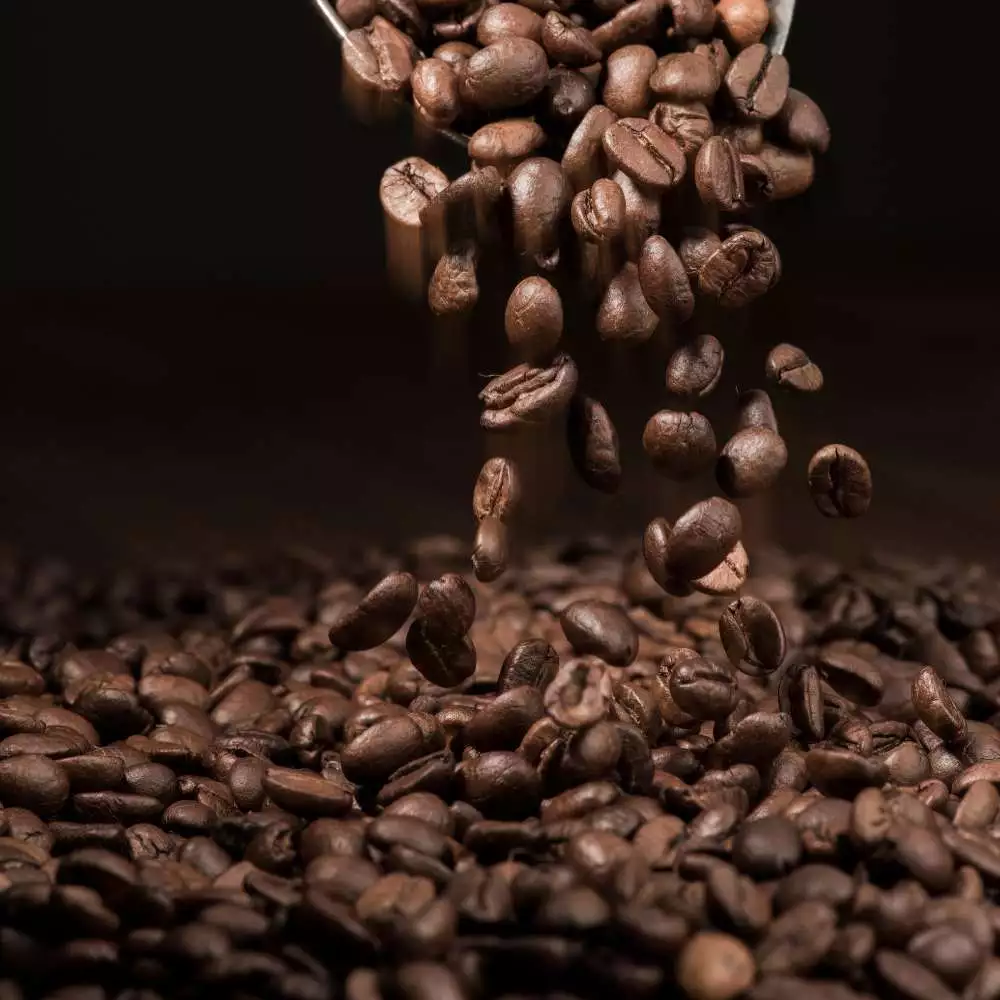
A Brief History of Italian Roast Coffee
The origins of coffee in Italy date back to the 16th century, when traders from the Middle East shipped coffee beans to the port of Venice. Over time, coffee became a staple of Italian culture and food, and the nation is now well-known for its aromatic and rich coffee. (1)
Italy’s rich café culture and the advent of espresso machines played a significant role in popularizing this distinctive coffee roast, with the iconic espresso becoming the benchmark for a well-executed dark roast. (2)
Over time, Italian roasters developed their unique approach to roasting, which emphasizes the development of deep, bold flavors and a rich crema. This darker roasting style became synonymous with Italian coffee culture and has since influenced coffee roasting techniques worldwide.
Defining Features of Italian Roast Coffee
This roast is characterized by its dark, oily appearance and bold, intense flavor profile. The beans are roasted longer than other dark roasts, resulting in a deeper color and a distinctive sheen from the natural oils released during the roasting process.
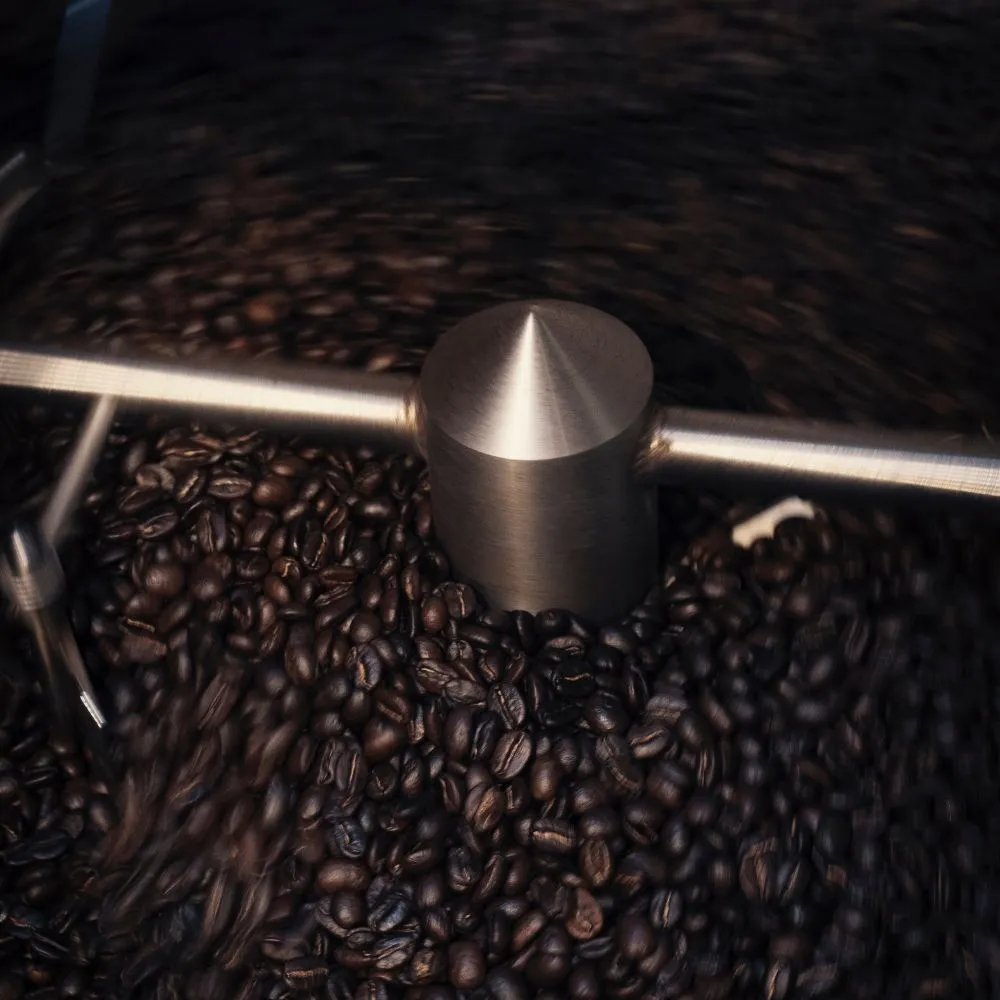
The flavor of this coffee roast is often described as robust, with notes of dark chocolate, caramel, and a hint of smokiness. The acidity is typically low, and the body is full and rich. The extended roasting time also gives it a long, lingering finish, which is a trademark of this bold and powerful roast.
Popular Italian Roast Coffee Blends and Varieties
This coffee roast is often used as the base for various coffee blends, especially those intended for espresso. Some popular Italian roast blends and varieties include:
- Classic Italian Espresso Blend: A traditional espresso blend that typically combines high-quality Arabica beans with a smaller percentage of Robusta beans for added body and crema. The flavor profile is bold, rich, and balanced, with a strong aroma and a velvety finish.
- Sicilian Gold Coffee: This blend is known for its intense, full-bodied flavor and low acidity. It often incorporates a complex and smoky taste with subtle hints of cocoa
- Napoli Blend: The Napoli blend offers a Robust High Caffeine Southern Italian Dark Roast Coffee, featuring a bold, intense flavor with notes of Apricot Jam, Malt, and Cocoa Gran.
By understanding the origins, defining features, and popular blends of this delightful coffee, you’ll be better equipped to appreciate the nuances of this bold and flavorful dark roast.
The Roasting Process and Its Impact on Italian Roast Coffee
The roasting process plays a crucial role in defining the flavor profile of Italian roast coffee. By understanding the dark roasting process, how flavors develop during roasting, and how this particular roast compares to other dark roasts, you’ll gain a deeper appreciation for this rich and robust coffee.
The Dark Roasting Process
This coffee undergoes a dark roasting process, which is characterized by longer roasting times and higher temperatures compared to lighter roasts. During this process, the beans reach an internal temperature that is typically higher than most other dark roasts. This extended roasting time allows for the development of the deep, bold flavors that this coffee roast is known for.

As the beans reach their desired roast level, they take on a dark brown color and a shiny, oily appearance due to the release of natural oils within the beans. These oils contribute to the rich, full-bodied taste and smooth mouthfeel of this roast.
Flavor Development During Roasting
The roasting process has a significant impact on the flavor development of this coffee roast. As the beans roast, they undergo various chemical reactions that create new flavor compounds and transform existing ones. The longer roasting time of this coffee allows for more of these chemical reactions to occur, resulting in a complex and intense flavor profile.
During the roasting process, the natural sugars within the beans caramelize, which contributes to the sweet, caramel-like notes associated with this coffee. Additionally, the extended roasting time breaks down the beans’ acidity, creating a smoother and more balanced flavor with a lower acidity level.
Roast Levels: Comparing Italian Roast to Other Dark Roasts
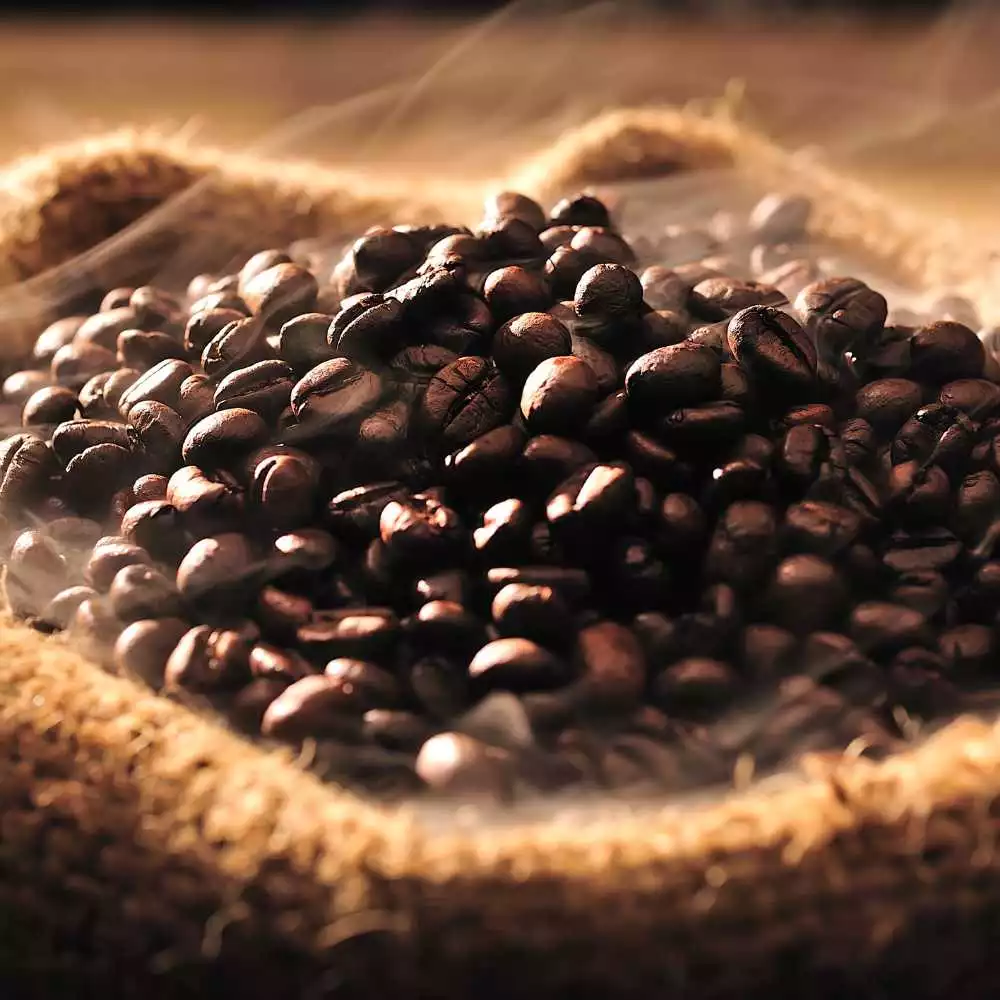
This coffee roast is one of the darkest roasts available, but it’s essential to understand how it compares to other dark roasts to appreciate its unique characteristics truly. Some common dark roast levels include:
- Full City Roast: This roast level features a dark brown color and a mild oil sheen. The flavor profile of a Full City roast is rich and full-bodied, with a moderate acidity level.
- Vienna Roast: The Vienna roast is slightly darker than a Full City roast, with a glossy surface and a more pronounced oil sheen. The flavor profile is robust and complex, with a balance of acidity, sweetness, and bitterness.
- French Roast: French roast coffee is darker than a Vienna roast, featuring a dark brown color with an oily surface. The flavor profile is bold and intense, with a smoky, slightly sweet taste and low acidity.
- Italian Roast: The darkest of the dark roasts, this coffee has a nearly black color and a glossy, oily surface. The flavor profile is bold, robust, and low in acidity, with distinct notes of dark chocolate, caramel, and a hint of smokiness.
By understanding the roasting process and how it affects this coffee’s flavor development, you’ll be better equipped to appreciate the unique characteristics that set it apart from other dark roasts.
Caffeine in Italian Dark Roast Coffee
It is a widely held belief that dark roasted coffees have a higher caffeine content compared to their lighter counterparts. However, this notion is not entirely true as the caffeine content in this coffee roast is slightly lower than in lighter roasts. (3) Nevertheless, the disparity is typically trivial and may not make a significant difference for most coffee enthusiasts.

The roasting process is a critical factor that determines the caffeine content in coffee beans. The extended exposure to heat during the roasting process leads to the evaporation of moisture in the beans, causing them to expand in size and reduce in overall density. As a result, there is a slight reduction in the caffeine content by mass, particularly in darker roasts. Nonetheless, the variance in caffeine content between light and dark roasts is often immaterial when measuring coffee by volume, such as scoops or tablespoons, as the larger, less dense dark-roasted beans occupy more space.
When preparing this coffee roast, the caffeine content per cup is contingent on various factors, including the brewing method, coffee-to-water ratio, and serving size. In general, an average 8-ounce cup of Italian dark roast coffee is likely to contain approximately 80 to 200 milligrams of caffeine, which is comparable to other roast levels’ caffeine content. However, it is worth noting that the caffeine content can vary significantly based on the coffee beans’ origin and processing method, as well as the individual’s body chemistry and tolerance levels.
Brewing and Tasting Italian Roast Coffee Beans
This roast offers a rich and indulgent experience, but to fully appreciate its complex flavors, it’s essential to choose the right brewing method, perfect the coffee grind size and coffee-to-water ratio, and explore its tasting notes and pairing ideas. Let’s dive into these aspects to ensure you make the most out of your coffee experience.
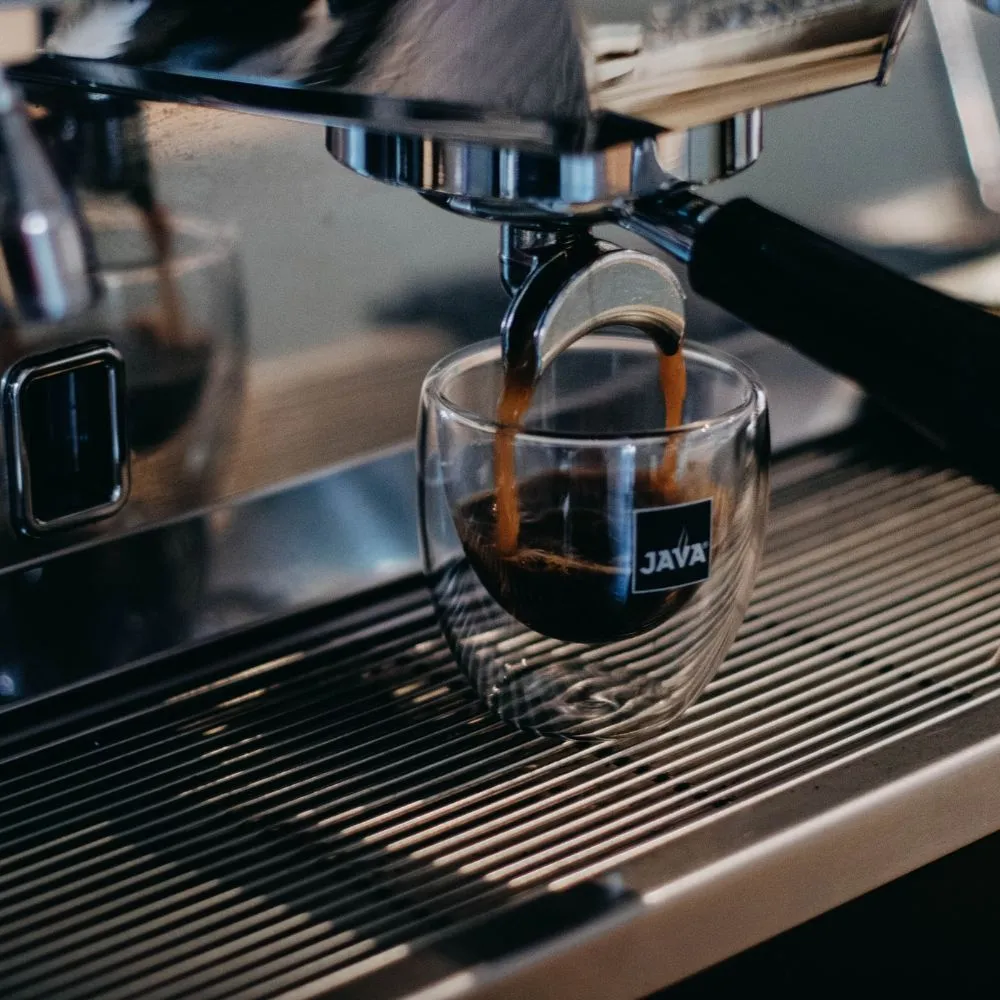
Choosing the Right Brewing Method for Italian Roast Coffee Beans

This roast is incredibly versatile and can be enjoyed using various brewing methods. However, some methods are better suited for extracting the full flavor potential of this dark roast. The most popular brewing methods include:
- Espresso: Espresso machines extract a rich, full-bodied shot with a thick crema, accentuating the coffee’s bold flavors and smooth mouthfeel.
- Moka Pot: A traditional Italian stovetop coffee maker, the Moka Pot brews a strong and concentrated cup, similar to espresso, allowing the coffee’s robust flavors to shine. (4)
- French Press: This immersion brewing method is excellent for showcasing this coffee roast’s full body and rich taste, as it allows the coffee’s natural oils to remain in the brew.
- Aeropress: With the ability to brew a concentrated, espresso-like coffee or a lighter, drip-style cup, the Aeropress is a versatile option for coffee lovers.
Perfecting the Grind Size and Coffee-to-Water Ratio
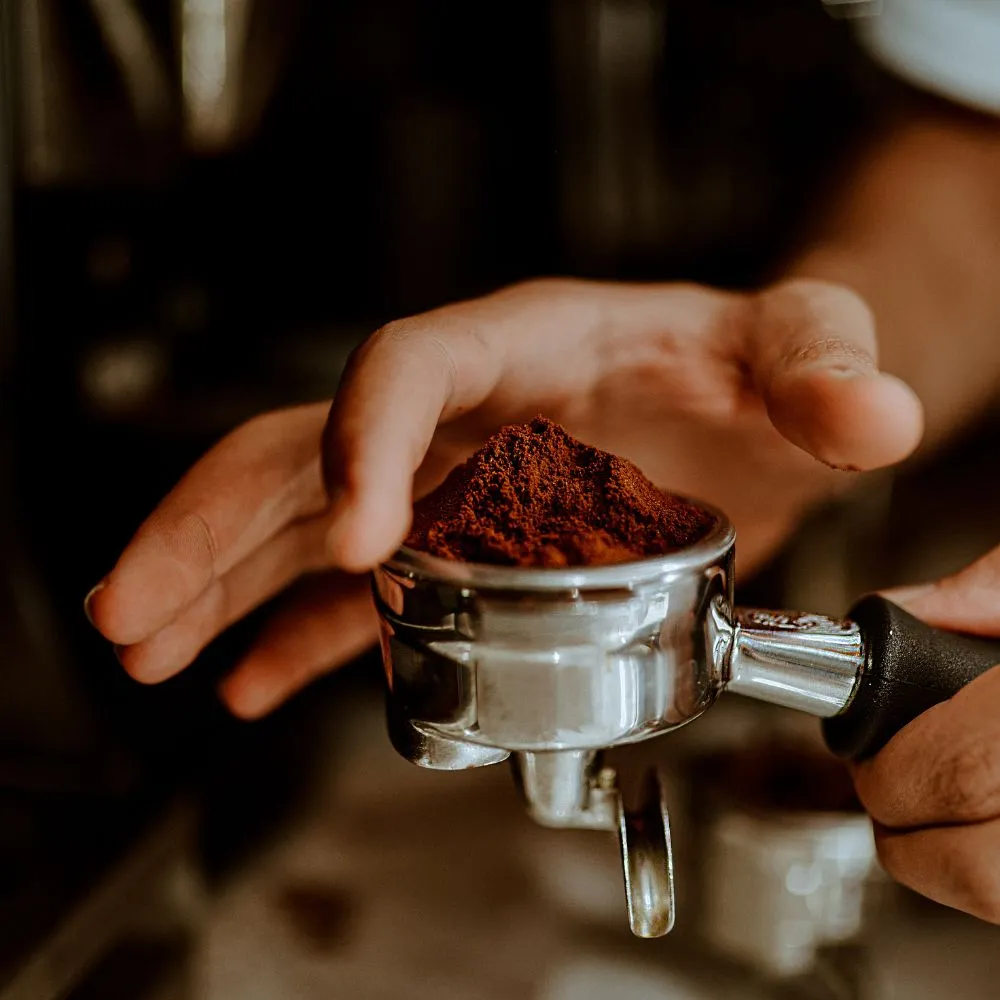
The grind size and coffee-to-water ratio are crucial factors in brewing a perfect cup of joe. Here are some general guidelines for each brewing method:
- Espresso: Use a fine grind size and a coffee-to-water ratio of approximately 1:2 (18 grams of coffee to 36 grams of water).
- Moka Pot: Opt for a fine to medium-fine grind size and follow the manufacturer’s recommended coffee-to-water ratio, typically filling the coffee basket evenly with grounds and filling the water chamber to the designated line.
- French Press: Choose a coarse grind size and a coffee-to-water ratio of about 1:15 (27 grams of coffee to 400 grams of water).
- Aeropress: Use a medium-fine grind size and follow the manufacturer’s recommended coffee-to-water ratio, which is typically around 1:16 (1 gram of coffee to 16 grams of water).
The Notes and Flavors of Italian Roast Coffee Beans

This coffee roast is known for its rich, bold, and complex flavor profile, which is shaped by the dark roasting process. As the beans reach this high level of roasting, they develop an array of tasting notes and characteristics that contribute to a unique taste experience. Let’s explore some of the most prominent notes and flavors associated with this distinctive dark roast.
Roasty and Smoky
Due to the intense roasting process, this roast often exhibits a pronounced roasted flavor and smoky aroma. The beans are heated until they develop a dark, almost black color, which imparts a deep, roasty character to the coffee.
Bittersweet and Caramelized
The sugars within the coffee beans caramelize during the roasting process, resulting in a bittersweet flavor profile that balances the natural sweetness of the beans with the bitterness of the dark roast. This can manifest as notes of dark chocolate, burnt caramel, or molasses.
Full-bodied and Rich
This roast typically boasts a full-bodied mouthfeel, thanks to the extended roasting time. The beans release oils that create a heavier, richer texture, which can contribute to a velvety and satisfying sensation on the palate.
Low Acidity
As coffee beans are roasted to a dark level, their acidity tends to decrease, which can lead to a mellower and smoother cup.
Earthy and Spicy Undertones
Depending on the origin of the beans used you may also encounter earthy, spicy, or nutty undertones. These nuanced flavors can add an extra layer of complexity and depth to the coffee, elevating the overall taste experience.
By understanding and appreciating the diverse notes and flavors of this coffee roast, you can fully immerse yourself in the rich and robust world of dark roasts, experiencing the unique taste sensations that have made this style of coffee a beloved choice for coffee enthusiasts around the globe.
Pairing Ideas for Italian Dark Roast Coffee

This coffee roast has a bold and complex flavor profile that pairs well with various foods. The coffee’s low acidity and full body make it a perfect companion for rich, indulgent treats and savory dishes.
- Pair with chocolate-based desserts, such as chocolate cake or tiramisu, to complement the coffee’s dark chocolate notes.
- Enjoy alongside buttery pastries like croissants or almond biscotti to contrast the coffee’s robust flavor.
- Savor with savory dishes like charcuterie boards, aged cheeses, and roasted nuts to accentuate the coffee’s bold and complex taste.
By selecting the right brewing method, perfecting the grind size and coffee-to-water ratio, and exploring tasting notes and pairing ideas, you’ll be well-equipped to fully appreciate the rich and robust world of this roast.
The Art of Blending Italian Dark Roast Coffee Beans
Blending this roast opens up a world of possibilities for flavor exploration and customization. By creating your custom blends, and learning tips for blending coffee beans, you can expand your palate and discover new taste sensations.
Creating Custom Italian Roast Blends
Creating your coffee blends allows you to experiment with different flavor profiles and discover unique combinations that cater to your personal preferences. When crafting a custom blend, consider the following:
- Start with a Base: Choose a bean variety that provides the desired body, mouthfeel, and foundational flavors. For example, a Brazilian or Colombian bean might serve as an excellent base for this roast blend.
- Add Complexity: Introduce beans with distinctive flavor characteristics to add depth and complexity to your blend.
- Balance the Flavors: Aim for a balance between acidity, body, and sweetness. Experiment with different ratios of beans to achieve the desired flavor profile.
- Adjust Roast Levels: Vary the roast levels of the beans in your blend to further customize the taste. For instance, blending a dark roast with a lighter roast can result in a more nuanced flavor.
Tips for Blending Coffee Beans
Keep a Record: Document your blend experiments, including bean varieties, ratios, and roast levels. This will help you refine your recipes and recreate successful blends in the future.
- Blend Post-Roast: Roast the beans separately before blending to ensure each variety reaches its optimal roast level.
- Experiment with Small Batches: Start by blending small quantities to minimize waste and fine-tune your recipes before committing to larger batches.
- Be Patient: Blending coffee is an art, and it may take several attempts to achieve the perfect combination. Give yourself time to experiment and learn from each experience.
By embracing the art of blending Italian roast coffee, you can unlock new flavor possibilities, customize your coffee experience, and develop a deeper appreciation for the rich and robust world of dark roasts.
Sustainable and Ethical Considerations for Italian Roast Coffee
As you enjoy the rich and robust flavors of this roast, it’s also essential to consider the environmental and ethical implications of coffee production. By understanding the environmental impacts, ethical sourcing practices, and ways to support sustainable coffee producers, you can make more informed choices and contribute to a more sustainable coffee industry.
Environmental Impacts of Coffee Production
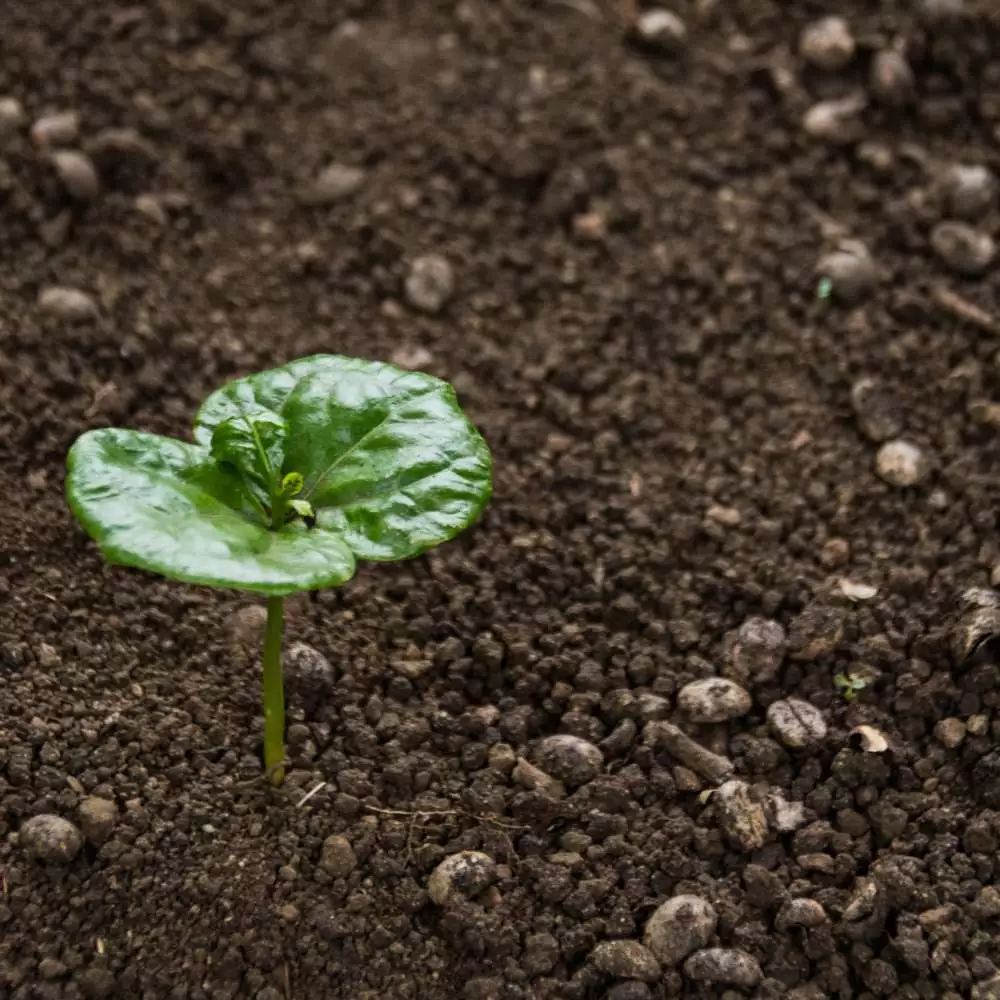
Coffee production can have significant environmental consequences, including deforestation, water pollution, and biodiversity loss. Some of the main environmental concerns associated with coffee production are: (5)
- Deforestation: To create space for coffee plantations, forests are often cleared, resulting in habitat loss and decreased carbon sequestration.
- Water Pollution: The use of agrochemicals in coffee production can lead to water pollution, impacting aquatic ecosystems and local water sources.
- Biodiversity Loss: The expansion of coffee monocultures can result in reduced biodiversity, as native plant and animal species are displaced.
To minimize these impacts, it’s essential to support coffee producers that employ sustainable practices, such as shade-grown coffee production, organic farming methods, and responsible land management.
Ethical Sourcing and Fair Trade Practices

In addition to environmental concerns, ethical considerations also play a significant role in the coffee industry. Issues such as low wages, poor working conditions, and child labor are prevalent in some coffee-producing regions. To promote fair labor practices and improve livelihoods for coffee farmers, consider supporting brands that prioritize ethical sourcing:
- Fair Trade Certified: Look for Fair Trade Certified coffee, which ensures that farmers receive fair prices for their beans, promotes safe working conditions, and supports community development initiatives.
- Direct Trade: Some coffee roasters engage in direct trade relationships with farmers, allowing them to bypass intermediaries and pay higher prices directly to the producers.
- Transparent Supply Chains: Seek out coffee brands that are transparent about their supply chains and actively work to improve the welfare of farmers and workers in their sourcing regions.
- Research Brands: Investigate coffee brands and roasters to learn about their sourcing practices, environmental commitments, and social initiatives.
- Support Local Roasters: Many local and independent roasters prioritize ethical and sustainable sourcing. By supporting these businesses, you can contribute to a more responsible coffee industry.
- Spread Awareness: Share your knowledge of sustainable and ethical coffee practices with friends, family, and social networks to encourage responsible consumption.
By considering the environmental and ethical aspects of coffee production, you can make more informed choices and support a sustainable and responsible coffee industry, all while enjoying the rich and robust flavors of your favorite dark roast.
Are Italian Roast Coffee Beans Healthy?
Italian dark roast coffee beans are not only popular for their bold and rich flavor but also for their potential health-promoting properties. When consumed in moderation, these beans can provide a range of health benefits which consist of :
Antioxidants
Coffee is a rich source of antioxidants that help protect cells from oxidative stress caused by free radicals. Darker roasted coffee beans have been found to contain higher levels of certain antioxidants due to the extended roasting process, which may offer additional health benefits. (6)
Cognitive Function
The caffeine in this coffee roast can help improve cognitive function, alertness, and concentration. Moderate caffeine intake has been associated with a reduced risk of cognitive decline and neurodegenerative diseases, such as Alzheimer’s and Parkinson’s disease. (7)
Heart Health
Some studies suggest that moderate coffee consumption may have a protective effect on heart health. Coffee drinkers may experience a reduced risk of heart disease, stroke, and certain heart-related conditions. (8) However, it’s important to note that excessive caffeine intake can have negative effects on heart health, so moderation is key.
Metabolism and Weight Management
The caffeine in coffee can boost metabolism and increase fat oxidation, which may aid in weight management. However, it’s crucial to consume coffee as part of a balanced diet and maintain a healthy lifestyle for optimal results. (9)
Type 2 Diabetes
Research has shown that moderate coffee consumption may be associated with a reduced risk of developing type 2 diabetes. The antioxidants and other bioactive compounds found in coffee can help improve insulin sensitivity and glucose metabolism. (10)
It’s important to keep in mind that the health benefits of Italian roast coffee beans can vary based on various factors, such as brewing method, serving size, and individual caffeine sensitivity. Additionally, adding excessive amounts of sugar, cream, or other high-calorie additives to your coffee can negate some of these benefits. Therefore, it’s recommended to consume your coffee beans in moderation as part of a healthy and balanced diet for optimal health benefits.
Conclusion
In conclusion, Italian roast coffee is a fantastic choice for coffee lovers seeking a bold and intense coffee experience. Its unique flavor profile, brewing versatility, and historical significance in Italian coffee culture make it a favorite among coffee enthusiasts worldwide. By gaining knowledge of the roasting process, perfecting brewing techniques, and supporting ethically sourced and sustainable coffee producers, you can enjoy the many benefits of this coffee roast while contributing to a more responsible coffee industry. So, indulge in the rich and smoky flavors of this roast and savor the complexity that lies within every cup.
FAQ
How does the roasting process affect the flavor of Italian roast coffee?
The roasting process brings out deeper, smokier, and caramelized flavors, while reducing coffee acidity, creating a bold and rich taste.
What are the best brewing methods for Italian roast coffee?
This coffee roast is versatile and works well with various brewing methods, including espresso, French press, and drip coffee makers.
Can I blend different coffee beans to create my own Italian roast blend?
Yes, you can blend different coffee beans to create your own Italian roast blend, experimenting with various bean origins and roast levels to achieve your desired flavor profile.
How can I ensure that the Italian roast coffee I purchase is ethically sourced and sustainable?
To ensure your coffee is ethically sourced and sustainable, look for certifications such as Fair Trade, Rainforest Alliance, or Organic, and research the coffee producer's environmental and social practices.














